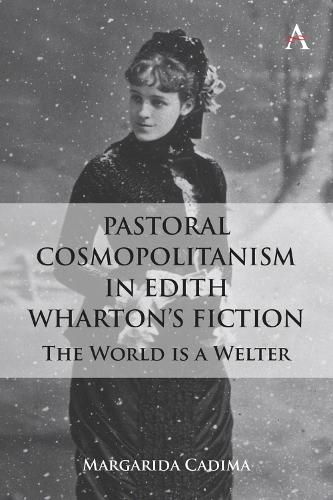Readings Newsletter
Become a Readings Member to make your shopping experience even easier.
Sign in or sign up for free!
You’re not far away from qualifying for FREE standard shipping within Australia
You’ve qualified for FREE standard shipping within Australia
The cart is loading…






Whartonian Landscapes sets forth how the "greening" of Wharton's private and public writings contributes to exciting strands in cultural geography and recent post-colonial theory: for example, biological and political constructions of citizenship, mobility, race, and nation; hospitality and hostility towards the "Other"; fraught experiences of exile and competing conceptions of home/land; trans/national selfhood; the figure of the nomad, the outcast, or the wanderer.
Ultimately, it will address that: what are the issues, broadly speaking what motivates an eco-criticism, how does that address the challenges of cultural geography, why can we uncover meaning by turning to Wharton? The argument made is that a reading of Wharton's fiction can help reveal how to understand those issues. This book situates Wharton as an author who is acutely responsive to pastoral tropes and terrain, among other species of spaces. She addresses the affective and geographical resonances of such sites, especially sparsely populated localities and landforms voguish mountain resorts, private ornamental gardens, lush public parks, monumental and "sham" ruins which offered pampered American socialites a brief escape from the "welter". I wish to complicate popular perceptions of "Wharton's world" reinforced by numerous handsomely produced cinematic and television adaptations of her novels as one rooted in often opulent domestic interiors with their waspish social cliques, strict rules of politesse and elaborate hierarchies.
Indeed, one of the central aims of this book is to treat pastoral as a kind of palimpsest a "parchment" upon which successive generations of artist-pilgrims have etched their impressions, constantly revising its imagery, formal procedures, and lyrical effects. This notion of the palimpsest also reinforces how my research seeks to extend the range of Wharton studies. First of all, my close reading of selected texts adds another "layer" of sophistication to the ever-evolving field of ecocriticism, whose core ideas and critical standpoints have assumed both an urgency and galvanising potency given the seismic upheaval to our material localities around the globe some of the most damaging tornadoes in US history; flooding in the American Midwest; devastating earthquakes in Haiti, China and Japan; stronger and more extensive wildfires in the American Southwest.
$9.00 standard shipping within Australia
FREE standard shipping within Australia for orders over $100.00
Express & International shipping calculated at checkout
Whartonian Landscapes sets forth how the "greening" of Wharton's private and public writings contributes to exciting strands in cultural geography and recent post-colonial theory: for example, biological and political constructions of citizenship, mobility, race, and nation; hospitality and hostility towards the "Other"; fraught experiences of exile and competing conceptions of home/land; trans/national selfhood; the figure of the nomad, the outcast, or the wanderer.
Ultimately, it will address that: what are the issues, broadly speaking what motivates an eco-criticism, how does that address the challenges of cultural geography, why can we uncover meaning by turning to Wharton? The argument made is that a reading of Wharton's fiction can help reveal how to understand those issues. This book situates Wharton as an author who is acutely responsive to pastoral tropes and terrain, among other species of spaces. She addresses the affective and geographical resonances of such sites, especially sparsely populated localities and landforms voguish mountain resorts, private ornamental gardens, lush public parks, monumental and "sham" ruins which offered pampered American socialites a brief escape from the "welter". I wish to complicate popular perceptions of "Wharton's world" reinforced by numerous handsomely produced cinematic and television adaptations of her novels as one rooted in often opulent domestic interiors with their waspish social cliques, strict rules of politesse and elaborate hierarchies.
Indeed, one of the central aims of this book is to treat pastoral as a kind of palimpsest a "parchment" upon which successive generations of artist-pilgrims have etched their impressions, constantly revising its imagery, formal procedures, and lyrical effects. This notion of the palimpsest also reinforces how my research seeks to extend the range of Wharton studies. First of all, my close reading of selected texts adds another "layer" of sophistication to the ever-evolving field of ecocriticism, whose core ideas and critical standpoints have assumed both an urgency and galvanising potency given the seismic upheaval to our material localities around the globe some of the most damaging tornadoes in US history; flooding in the American Midwest; devastating earthquakes in Haiti, China and Japan; stronger and more extensive wildfires in the American Southwest.